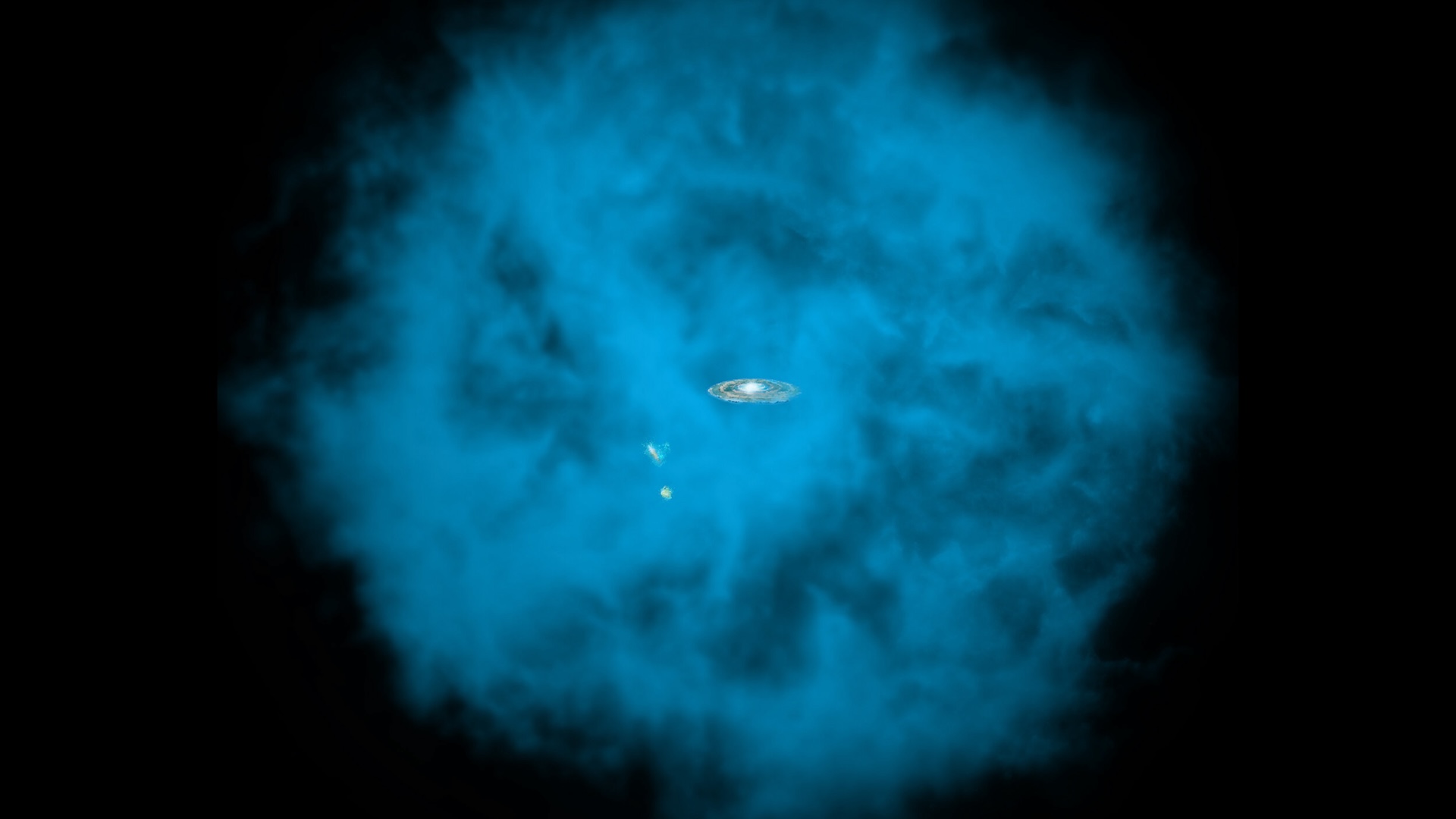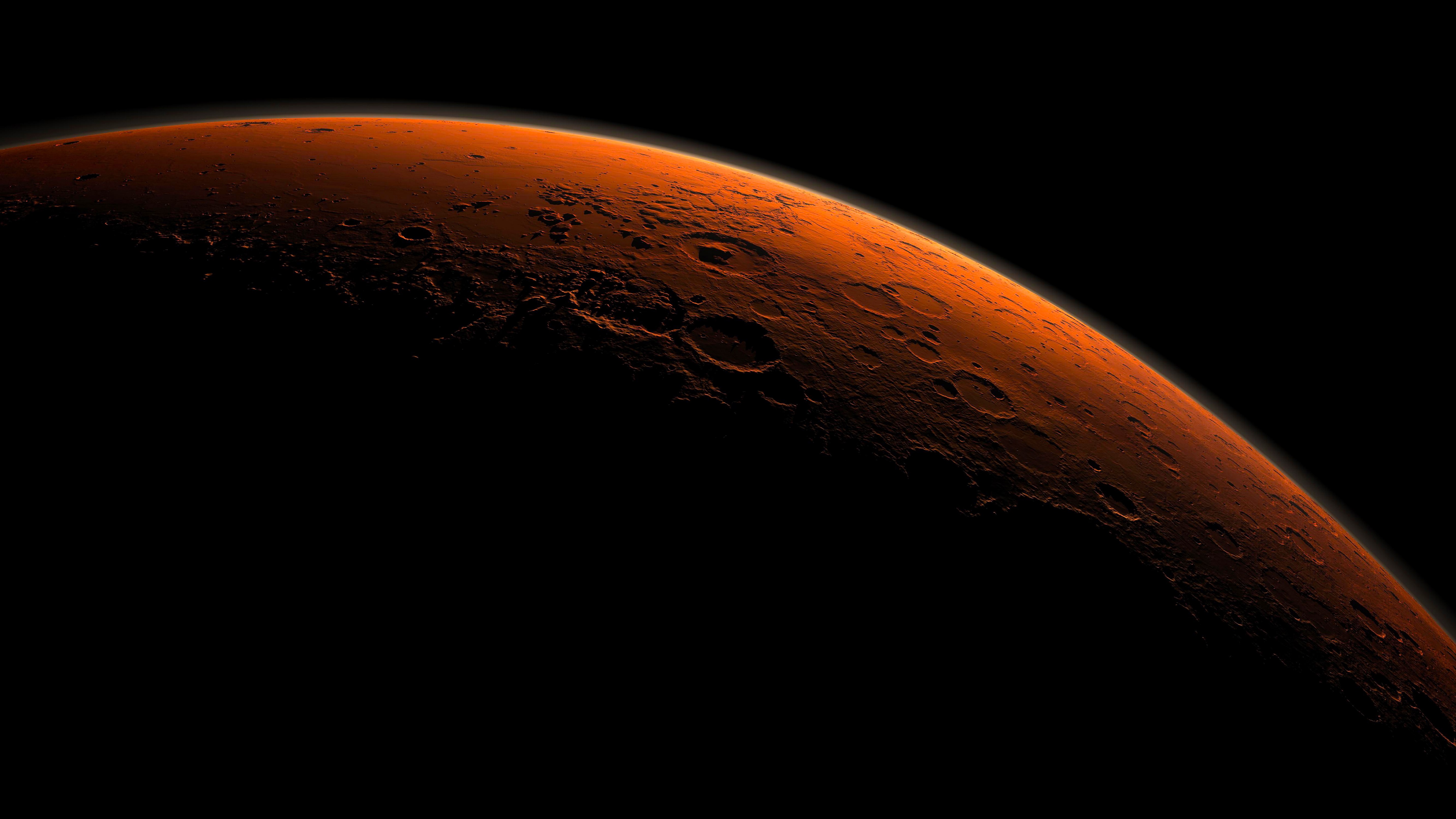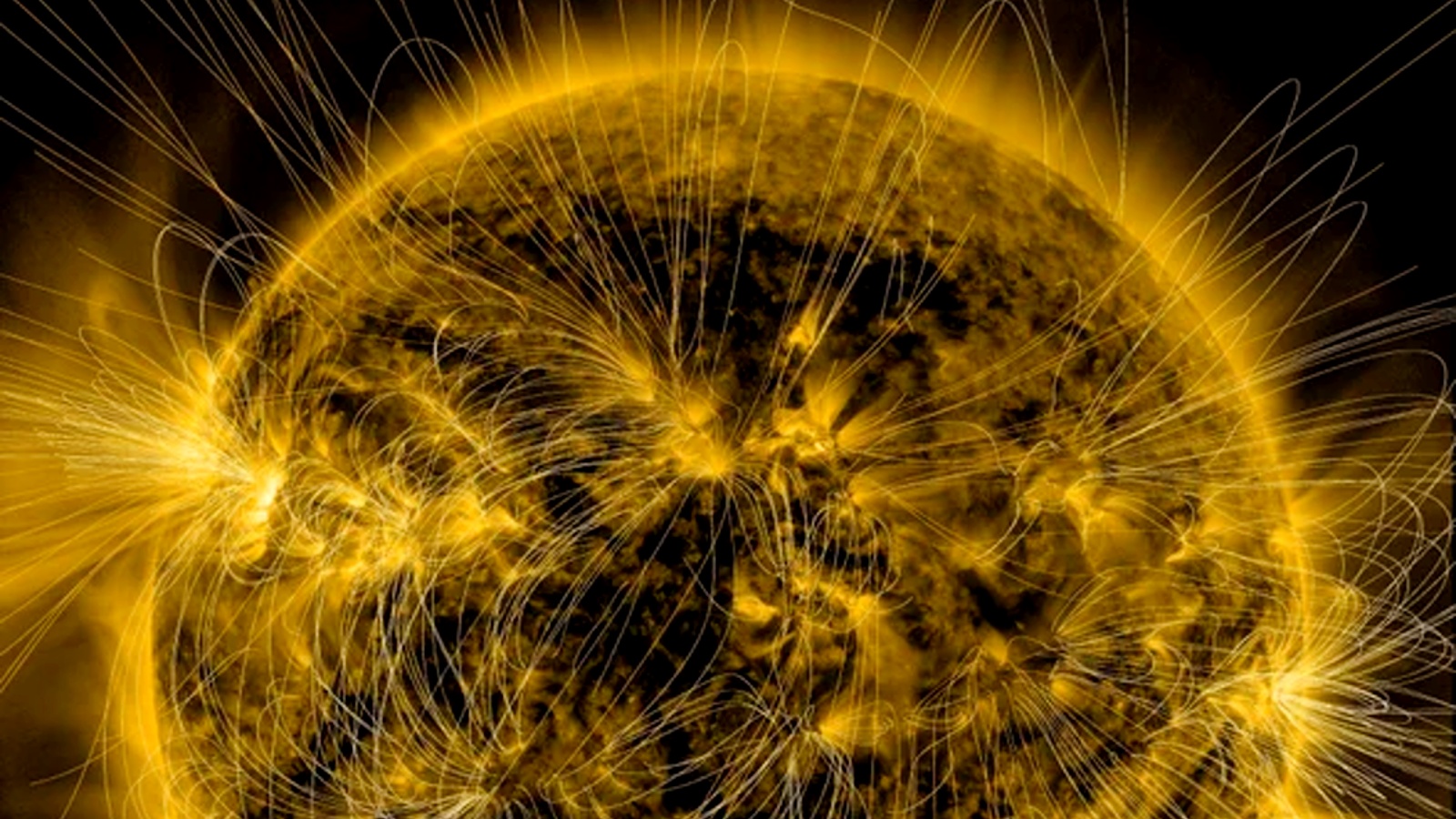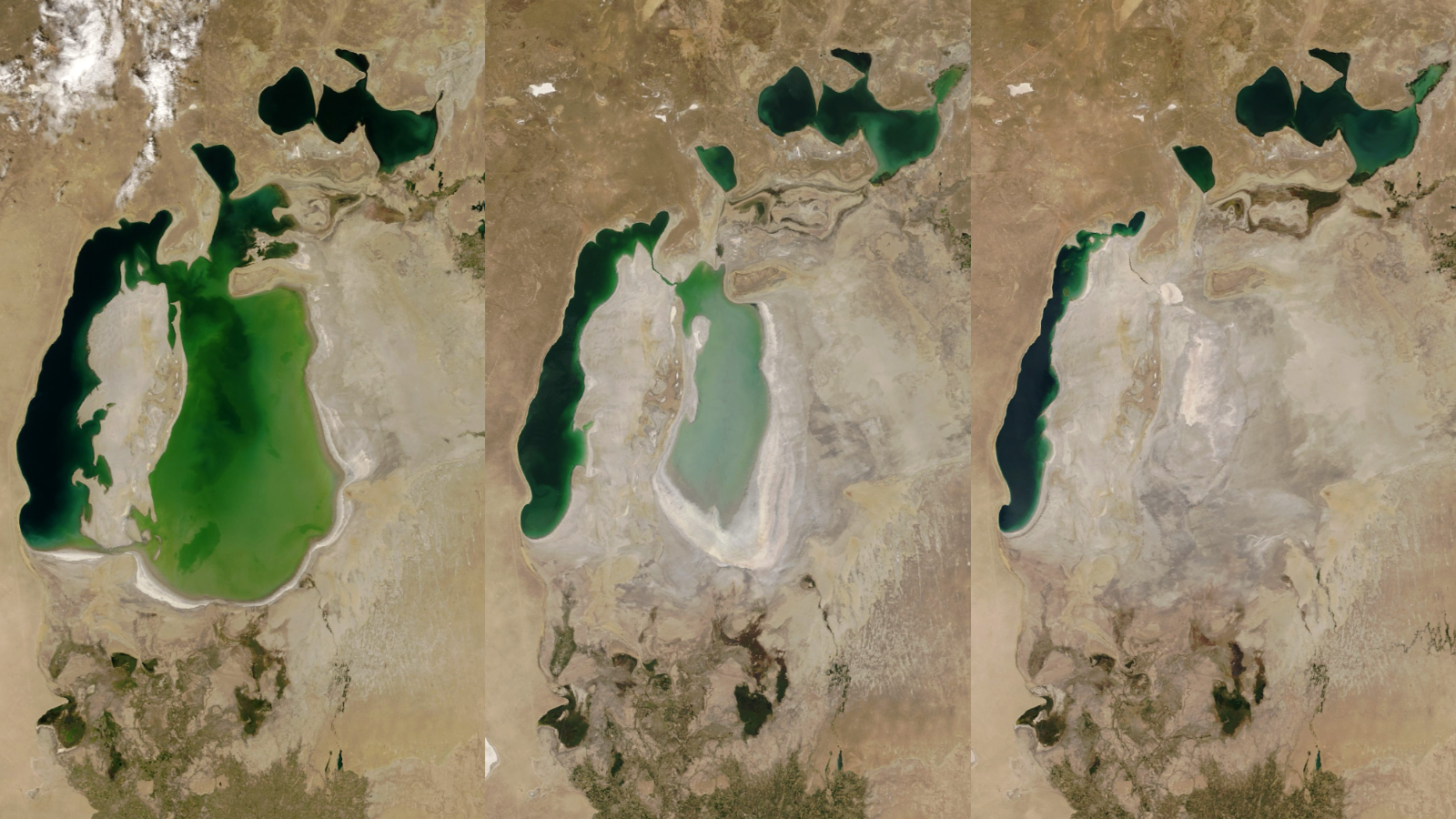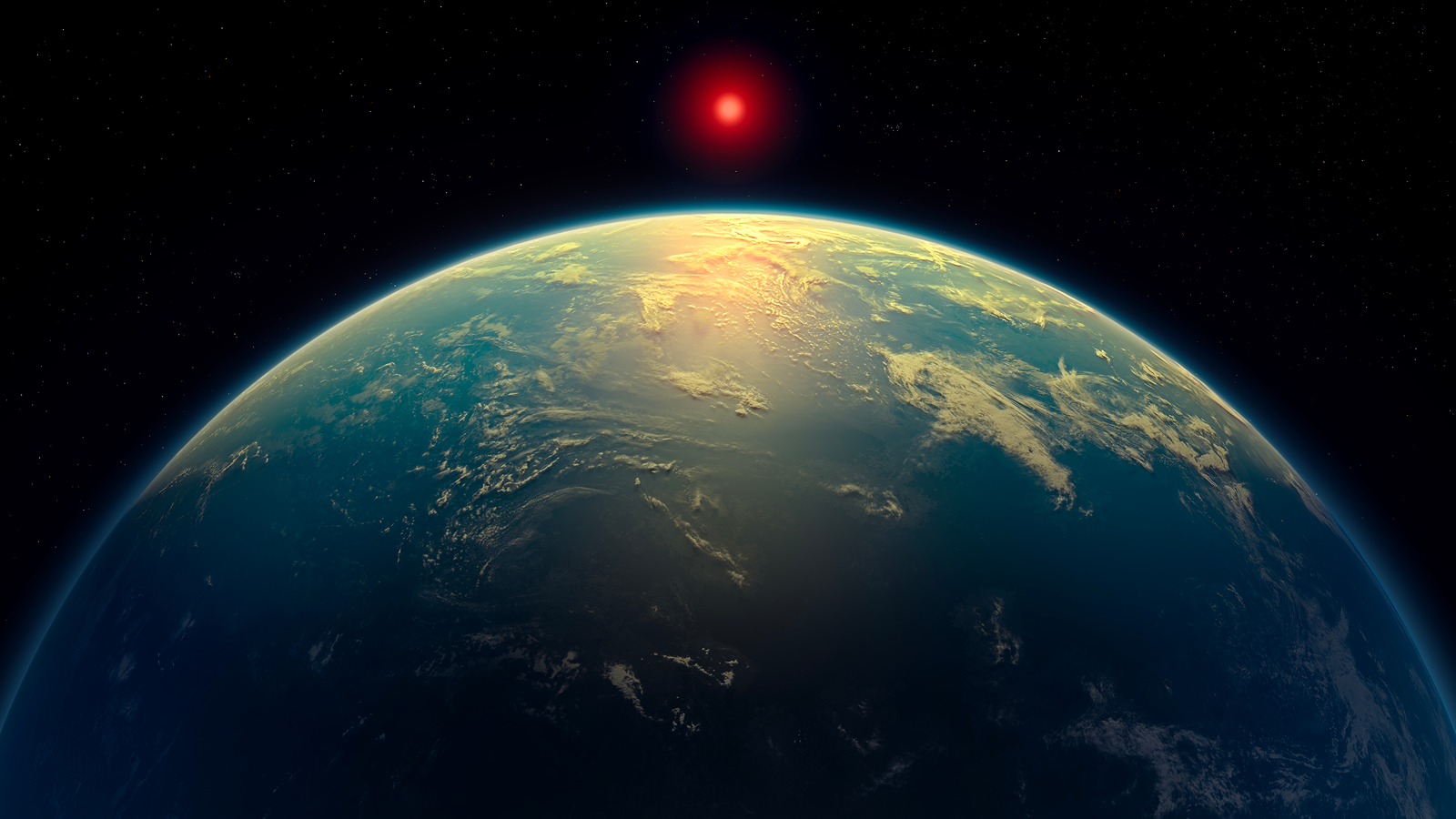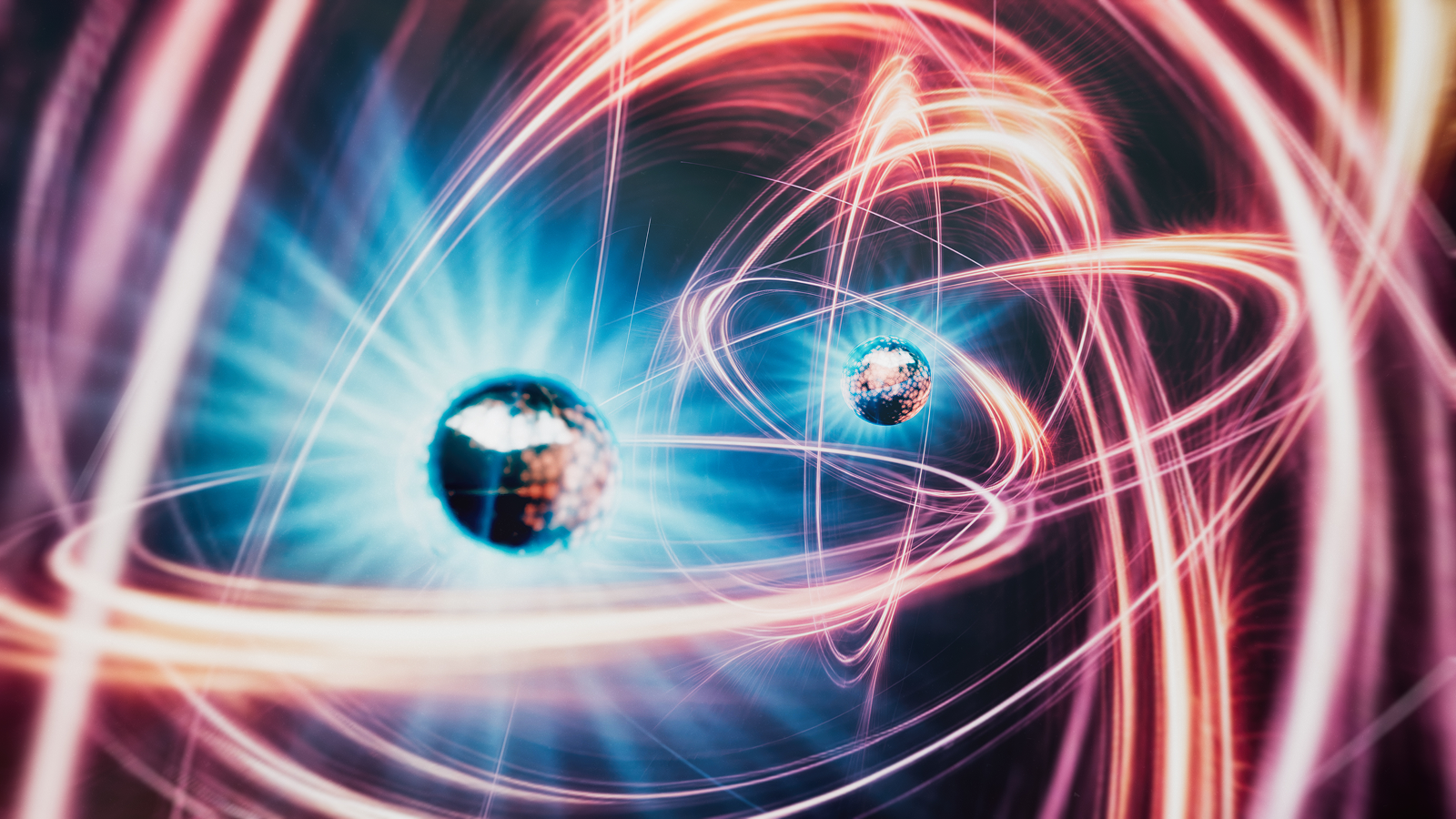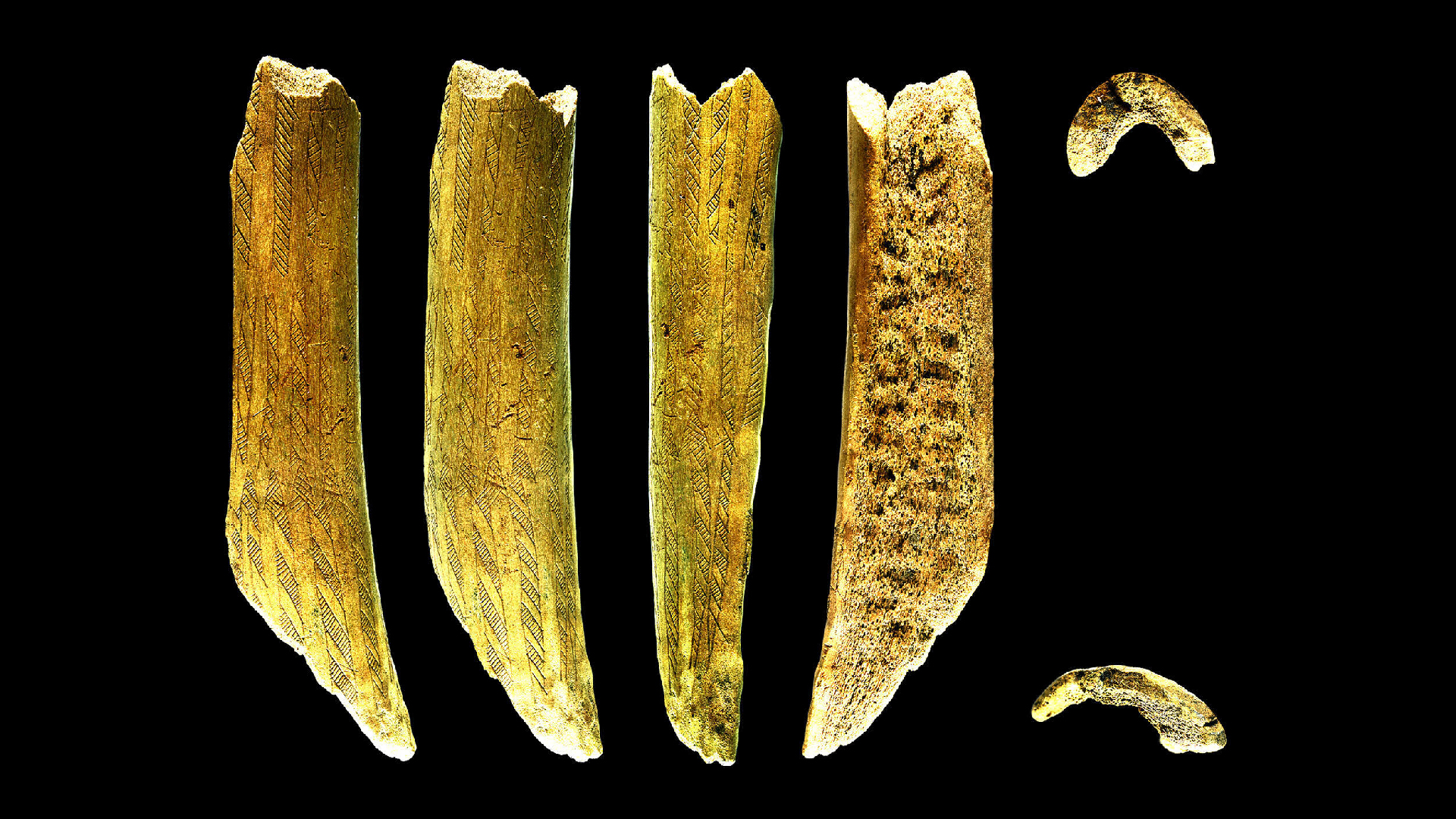Blue Ghost spacecraft captures rare, stunning views of Earth eclipsing the moon
Firefly Aerospace's Blue Ghost spacecraft took some unique photos of our home planet on its Mission 1 flight to the moon in late January and early February. The spacecraft is now in orbit around the moon, with a planned landing date of March 2.
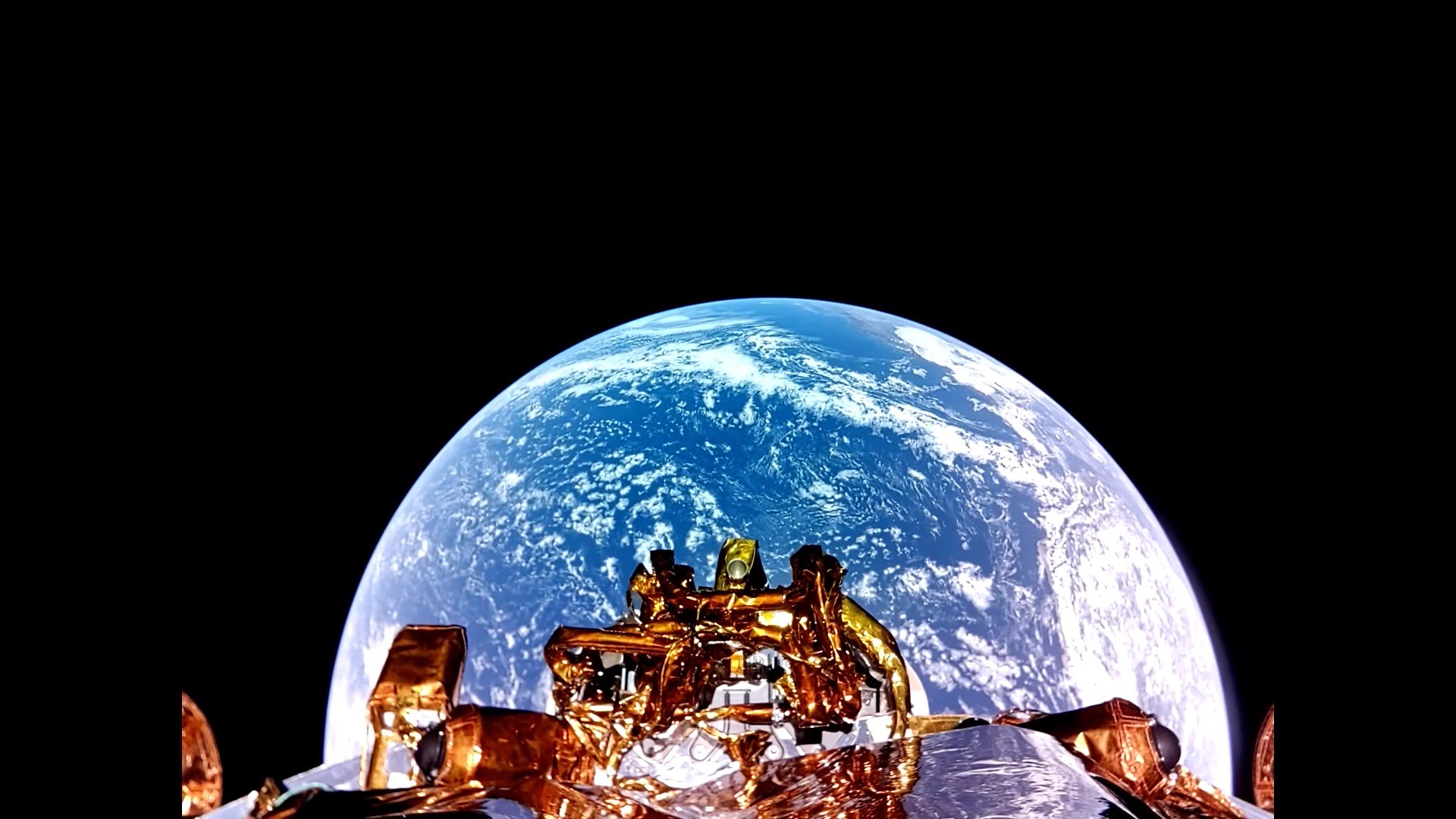
A "ghostly" spacecraft has shared a treasure trove of vacation photos from its recent trip into orbit, including a stunning selfie with Earth eclipsing the moon in the background.
This "ghost" isn't a phantom haunting space; it's the Blue Ghost lunar lander, a shiny new spacecraft on its way to the moon, tightly packed with science instruments and ready to learn about our celestial neighbor.
The mission, Blue Ghost Mission 1 — also known as Ghost Riders in the Sky — is spearheaded by the private company Firefly Aerospace as a part of NASA's Commercial Lunar Payload Services program. The Blue Ghost lander contains 10 science payloads designed to collect lunar samples, help future spacecraft position themselves, measure electric and magnetic fields, and a lot more. The mission's goal is to further our understanding of the moon while demonstrating new technology.
Blue Ghost launched from NASA's Kennedy Space Center on Jan. 15. Over the following few weeks, the lunar lander circled Earth a few times and then fired up its thrusters to set it on a four-day journey to the moon. Along the way, Blue Ghost snapped several photos to test its cameras, including a couple "selfies" with our home planet. The moon snuck into a couple of the images as well, showing up as a small, white dot hovering over the swirling clouds and deep-blue oceans that make Earth such a special place in the universe.
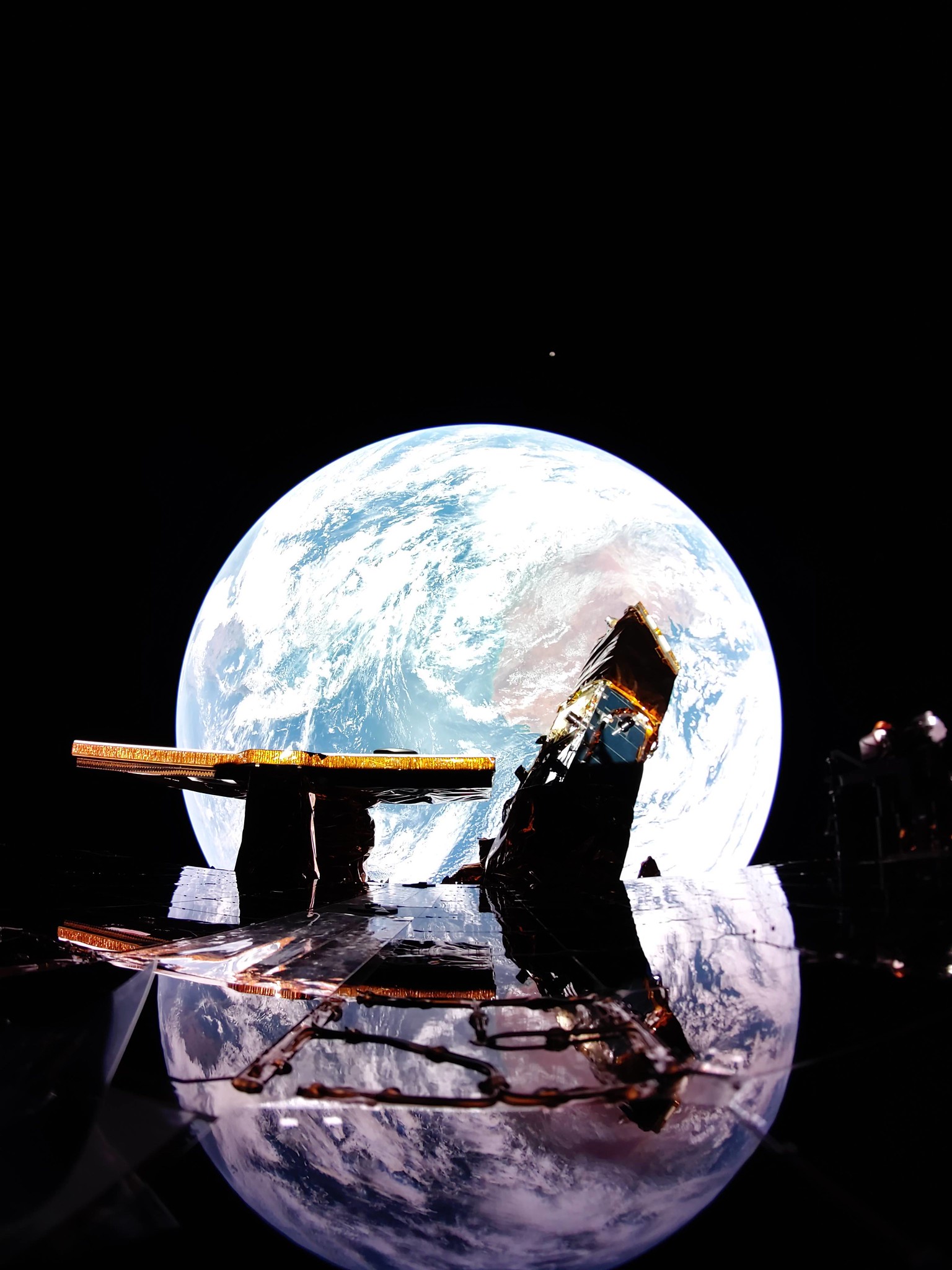
The lander even managed to capture footage of Earth and the moon engaged in their usual cosmic dance, but from a perspective we rarely see. From the spacecraft's view, Earth slipped in front of the moon, eclipsing it entirely. As Blue Ghost spun around to the nightside of our planet, Earth transformed from a bright globe to a thin crescent, following the moon into shadow.
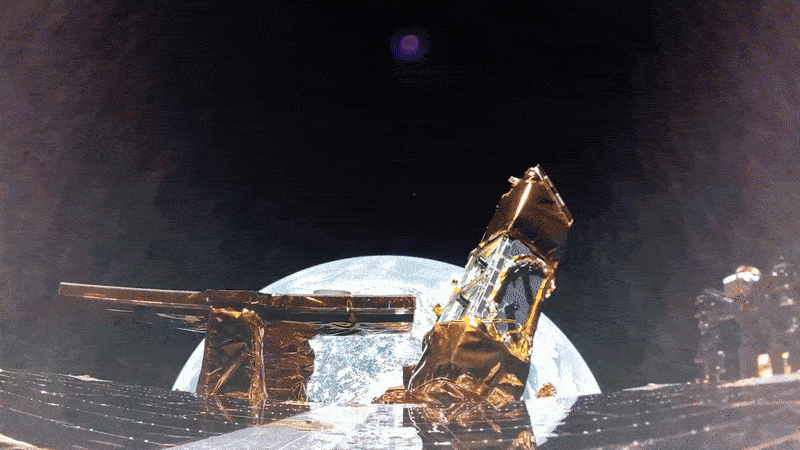
On Feb. 13, Blue Ghost reached lunar orbit, where it will remain until its planned lunar landing attempt on March 2 — potentially becoming only the second private lunar lander ever to touch down on the moon's surface. (Houston-based Intuitive Machines' Odysseus lander was the first to do so when it reached the moon in February 2024.)
Blue Ghost's landing site, Mare Crisium, is a giant impact crater that was partially filled in with a flood of basaltic lava approximately 3 billion years ago. The crater is visible from Earth as a dark circle in the northeast section of the moon if viewed from the Northern Hemisphere. (It appears in the southwest section from Earth's Southern Hemisphere.) You can see the dark spot with the naked eye, but it looks even better through a pair of stargazing binoculars or a good backyard telescope.
Sign up for the Live Science daily newsletter now
Get the world’s most fascinating discoveries delivered straight to your inbox.
While spinning around the moon, the lander also took the opportunity to film the surface of the lunar far side — the part of the moon we never see from Earth. Blue Ghost's low altitude will allow the spacecraft to capture the details of each crater and show hills and valleys silhouetted against the black sky.
While flying about 75 miles (120 kilometers) above, Blue Ghost took a video showing the far side of the moon's cratered, lumpy surface.
Blue Ghost has already provided us with some amazing photos and videos, but its goal is to do much more than that. Following a successful landing, Blue Ghost will deploy several experiments to help us understand how the moon formed, study lunar dust, and test new technologies for future moon missions. This shiny little phantom could be a giant leap forward for lunar exploration and beyond.

Damien Pine (he/him) is a freelance writer, artist, and former NASA engineer. He writes about science, physics, tech, art, and other topics with a focus on making complicated ideas accessible. He has a degree in mechanical engineering from the University of Connecticut, and he gets really excited every time he sees a cat.
You must confirm your public display name before commenting
Please logout and then login again, you will then be prompted to enter your display name.
